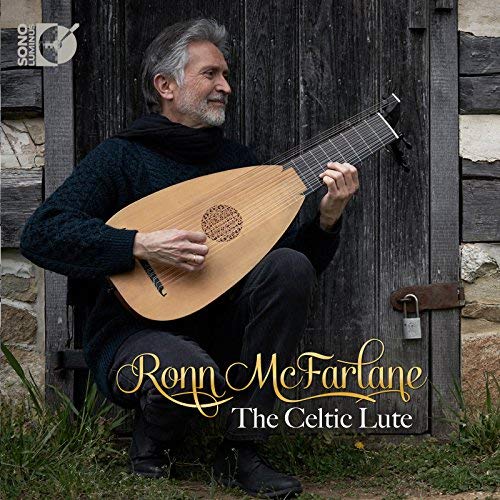by Hannah Schoepe

Released in July by Sono Luminus, McFarlane’s album is a haven of beauty, presented with dignity and grace. The repertoire traverses Ireland and Scotland, showcasing traditional melodies from various levels of society throughout the Renaissance and Baroque periods.
Solo lute has a magical quality of calmness — an aspect McFarlane realizes to the fullest degree. Even though the playlist includes a wide range of emotions from sadness to joy and contentment, a feeling of peace permeates the album. It is as though the sound of the instrument is wise and cultivated, giving the drama a sense of acceptance — natural and fluid, like waves in the ocean.
While most of the 26 tracks are by anonymous composers and can only be identified by region, 11 are by Turlough O’Carolan, a blind Renaissance harpist born in 1670, considered by many to be Ireland’s national composer. Among these is one of the most beautiful selections on the album, Carolan’s Dream. This tune encompasses all that dreams can include: dark and light memories, aspirations, and desires. It’s written with an unmistakably Irish flavor linked with a contrasting sense of tragedy and gentle wistfulness.
McFarlane plays his 13-course Baroque lute with great expertise and musicality. His musicianship is also reflected in the repertoire order: the playlist varies in tonality, tempos, and mood. While the CD opens on an inviting note with Carolan’s Welcome, the tempo picks up with Banish Misfortune, and then slows back down with The Battle of Harlaw — a piece reflective of the horrors of war. Flowers of Edinburgh evokes images of beauty that ache with their purity. A few tracks later, in Fanny Power, he lands in a major key, conveying a sense that all is well and good with the world. The final track, The Butterfly, includes various sound elements and harmonic effects that cultivate a unique modern flavor.
McFarlane’s mission is to increase the accessibility of the lute for contemporary audiences — not an easy task, considering that Renaissance music hasn’t been on the top of the charts for a few centuries. However, this album is engaging and appealing.
The Celtic Lute is available on Spotify, YouTube, and Google Play.
Published on ClevelandClassical.com December 11, 2018.
Click here for a printable copy of this article


